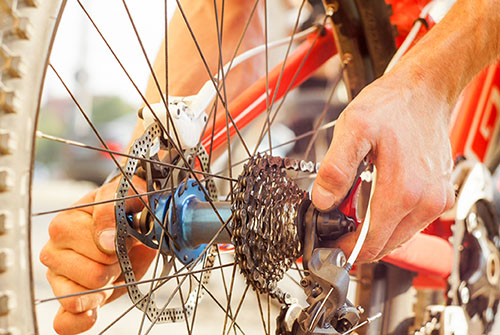NOTICE: NOT FOLLOWING THESE GUIDELINES MAY RESULT IN A VOID WARRANTY
IMPORTANT: YOU MUST TIGHTEN YOUR CRANKARM BOLTS (THE BOLTS THAT CONNECT THE PEDAL SHAFTS TO THE BIKE) DAILY FOR THE FIRST 3 WEEKS BY USING THE 8MM ALLEN TOOL PROVIDED IN YOUR TOOL KIT. After this initial time period, it will be sufficient to tighten them every week.
-
Twice a week check your tire pressure and make sure your tires are inflated to 70 PSI. This will enable you to ride more efficiently and will also help to reduce pinch flats. It is a good idea to check over your tires at the end of the day for thorns or glass. By doing this you may catch a flat before it happens.
-
Check all the fastening bolts on the bike regularly, at least once every two weeks. Do not underestimate the power of road vibration. Crankarm, handlebar, stem, seat, and chainring bolts will loosen under normal riding conditions. They should all be tightened with the correct metric allen wrench to prevent failure while riding.
-
Inspect your wheelset at least once every two weeks. Spin the wheels and check for trueness between the brake pads. Wobbles of more than a couple of millimeters should be corrected by a professional bicycle mechanic. Neglected wheels can cause expensive problems, so keeping an eye on them is a great way to save money in the long run.
-
Barrel adjusters: The secret to quick gear adjustments. Consult your owner's manual and learn how to use barrel adjusters. A couple of counter-clockwise turns of the barrel adjuster will solve minor shifting discrepancies on a new bike ninety percent of the time. Do not adjust the limit screws on the derailleurs yourself. If the barrel adjuster does not correct the problem, consult a professional bicycle mechanic.
These maintenance steps will help keep your bike running smoothly and without problems. Familiarize yourself with your owner's manual. For more in-depth repairs, take your bike to a reliable shop, or purchase a good repair manual, such as Leonard Zinns, "The Art of Mountain Bike Maintenance." Bike repair is not a simple task. Having the correct information will save you time and money and keep your bike performing at its best with minimal cost.
